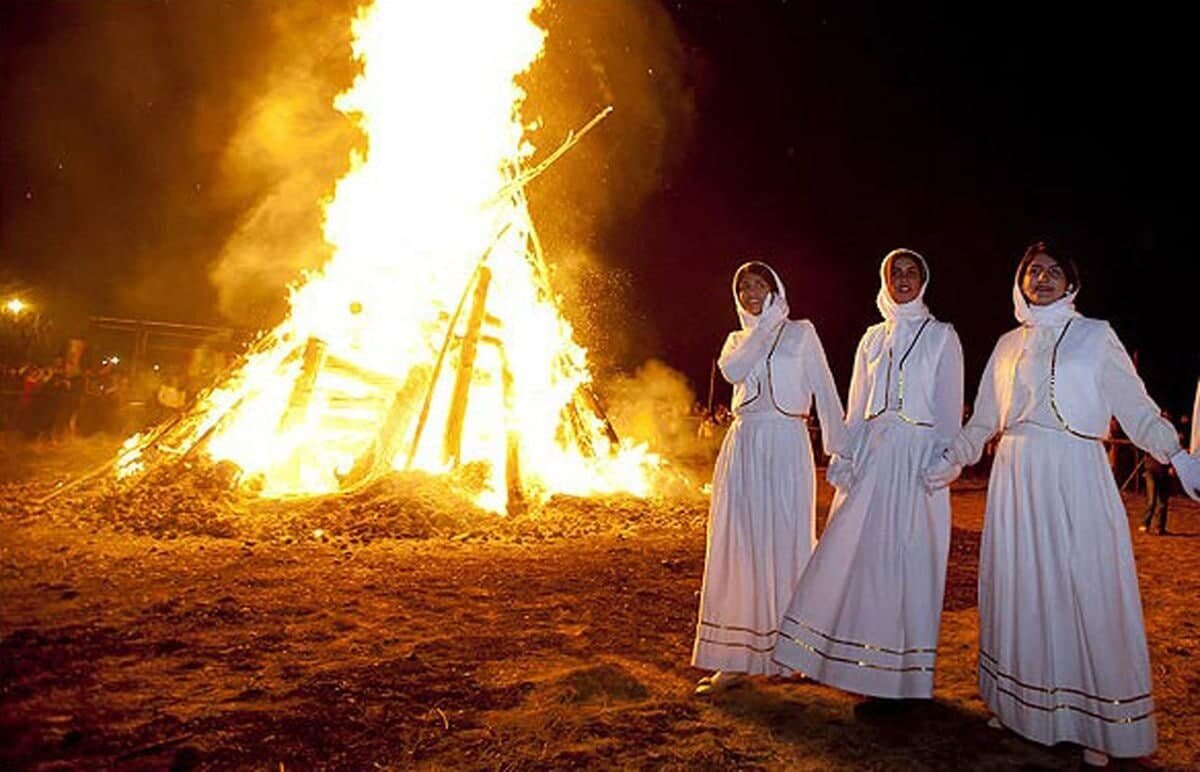Iran to celebrate UNESCO recognition of Sadeh festival

TEHRAN – Iran’s Research Institute of Cultural Heritage and Tourism is set to hold an event, celebrating the UNESCO designation of the Sadeh festival as a shared heritage between the Islamic Republic and Tajikistan.
This recognition was officially granted in December of last year, strengthening cultural ties between the two nations. The event is scheduled to take place on Sunday at the institute, ILNA reported.
Distinguished speakers at the event will include Mustafa Deh-Pahlavan, the head of the research institute; Zohidi Nizomiddin Shamsiddinzoda, the ambassador of Tajikistan to the Islamic Republic; Alireza Izadi, the Director-General of the Registration of Cultural Heritage and Preservation and Revitalization; Farzaneh Gashtasb, an associate professor at the Institute of Humanities and Cultural Studies; Afshin Nemiraniyan, the head of the Zoroastrian Society of Tehran; Atousa Momeni, the head of the regional center for intangible heritage in Tehran; Alireza Hasan-Zadeh, the head of the Anthropology Research Center and the director of the UNESCO Sadeh dossier; and Padram Soroushpoor, the editor-in-chief of the Frouhar Monthly Magazine.
According to organizers, this celebration not only marks the importance of the Sadeh festival in the cultural heritage of Iran but also highlights the collaborative recognition of this tradition as a shared heritage with Tajikistan, fostering goodwill and cultural understanding between the two nations.
The Sadeh festival, aka Jashn-e Sadeh in Persian, was registered as a common heritage between Iran and Tajikistan during the 18th session of the Intergovernmental Committee for the Safeguarding of the Intangible Cultural Heritage, held in Kasane, Botswana, on Dec. 4-9.
The festivity, usually occurring on January 30th, derives its name from the Farsi word for "one hundred" (Sad), marking 50 days and 50 nights before Nowruz, the commencement of the Iranian calendar year on March 21st. Rooted in ancient traditions, it is celebrated predominantly by Iranian Zoroastrians in cities like Yazd, Tehran, Shiraz, and Kerman. The festival commemorates the mythical discovery of fire, observed with the lighting of a large woodpile during its zenith.
According to Iranian anthropologist Alireza Hassanzadeh, Sadeh, as one of Iran’s ancient rituals, takes place in two cultural domains of Zoroastrians in Iran, such as cities in cultural areas like Kerman, Yazd, Shiraz, Isfahan, and more. On the other hand, it is also celebrated in the cultural domain of Khorasan, especially among rural communities.
Ancient Iranians believed that the fire lit on this day symbolized the warming of the earth and its preparation for the arrival of spring. Elsewhere in his remarks, the experts reminded of the fondness for preserving cultural heritage among Iranians. “In fact, our most important literary and identity sources, such as the Shahnameh, contain detailed and vital references to this element. Sadeh symbolizes the unity of Iranian ethnicities and their peaceful coexistence over the centuries. Sadeh has been and remains one of the sources of unity and coherence among Iranians.”
In this ceremony, which is celebrated in the early evening of the tenth of Bahman (which falls on January 30, 2024) fire, along with water, wind, and earth, is considered sacred elements, playing practical roles in many Iranian festivities. Ancient Iranians believed that the fire lit on this day symbolized the warming of the earth and its preparation for the arrival of spring.
The anthropologist also responded to a question of whether other countries could join this dossier besides Tajikistan and why we did not see further participation. “Currently, Iran and Tajikistan are the primary countries hosting this ritual extensively. In other countries besides these two, the mentioned celebration of Sadeh is not conducted on a broad scale. Note that fire festivals, like spring celebrations, are held in many countries, but these celebrations are not equivalent to the Sadeh festival. Sadeh has its distinct definition, and it remains as it is, just like understanding the Chinese New Year due to its connection with spring, akin to Nowruz (which is not).”
Hassanzadeh, who presides over Iran’s Anthropology Research Center, referred to the actions needed to revitalize and preserve the Sadeh festival and said: “Generally, each intangible heritage dossier entails a set of careful measures to conserve and promote the elements of intangible heritage, which are detailed in the Sadeh festival’s dossier. This involves the organizers of this ritual, non-governmental organizations, and governmental bodies.”
The duty of governmental bodies includes facilitating the celebration of this ritual in various regions of the country and assisting people and non-governmental organizations, he said.
AFM
Leave a Comment